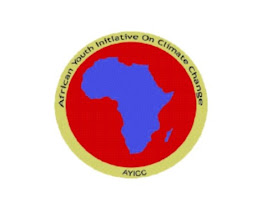CLIMATE FINANCE
CLIMATE FINANCE.
Climate Finance has been a core element of most climate change international agreements and was incorporated in the United Nations Framework Convention on Climate Change [1992]. Climate Finance exists in the form of the developed countries pooling resources and assisting the less developed countries in dealing with effects of climate change. The consensus after the 2009 Copenhagen Climate Change Summit was that these developed countries shall be releasing upwards of 100 Billion Dollars from the year 2020 going forward. For starters, it was decided there would be a release of funds of up to 30 Billion Dollars going forward. So far, the industrialized nations have managed to generate the 30 Billion Dollars needed annually. However, there is still not yet a clear path on how the 100 Billion Dollar mark shall be reached. This is undoubtedly a concern since most of these countries never follow up on aid promises unless a robust framework is put in place to ensure that the commitments are honored. In the process, there has developed reclassification of some fund types, in that there are funds that are merged as they are operational on the same front. One such kind of funds is the development aid, where most of it is used in facilitating the enjoyment of basic needs and primary development. On the other hand, climate funds meant for dealing with effects of climate change [adaptation] are also in line with meeting basic needs among others. Therefore, about this, it is essential that the world moves towards climate resilient development.
New institutional arrangements have been vital in ensuring that there are natural flows and access points to the funds. One such initiative that has been a step in the right direction has been the Green Climate Fund [G.C.F]. It has been affirmed as the primary channel through which the funds are allocated to the developing countries. With headquarters in South Korea, it seeks to facilitate proper partner collaboration of both the developed and the developing countries. This has inevitably helped to iron out issues along the way. Another fund that exists is the Adaptation Fund that also generates revenue from carbon market businesses, and the revenue is used to support adaptation and mitigation projects towards climate change. Over time, there have been deliberations that are geared towards developing other sources of climate finance to ensure that the adaptation and mitigation processes are well supported and the financial support is shielded from shocks that exist. It is also imperative that the private sector is involved and also mandated to diverse towards clean, renewable energy and make it available to consumers efficiently.
Closer home, we have had various institutional arrangements that seek to deal with the effects of climate change. Counties have begun deliberating on the aspect of climate change being mainstreamed into multiple elements of county planning. As an urban planner, this is a significant step and can only be lauded as much. Makueni County, for instance, has been affirmed as the sole county not only in Kenya but also in Africa, to pass a Climate Change Law. The law seeks to set aside, about 1% of the county’s annual budget towards dealing with effects of climate change regarding adaptation and mitigation. It has undoubtedly set the pace for other counties especially in the Arid and Semi-Arid Lands [ASALS] with counties such as Wajir and Isiolo, following suit. To be able to deal with the effects of climate change it is crucial that there is the empowerment of decentralized governments to ensure that the adaptation and mitigation processes are embraced at the local level and therefore, made more proactive. This is so because the locals are able to notice and identify the issues directly as opposed to operations through a designated planning office at the head of government. Climate Finance is as essential and as crucial a debate as Climate Change, and we should be able to develop synergies and nexus between stakeholders, agencies and partner countries to ensure that the funds are made available and are efficiently used to deal with the impacts of climate change on adaptation and mitigation bases.
By Innocent Deckoks.


Here you will learn what is important, it gives you a link to an interesting web page: Tuko News Kenya Today
ReplyDelete